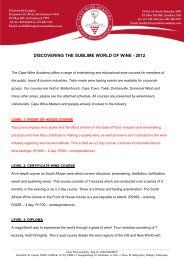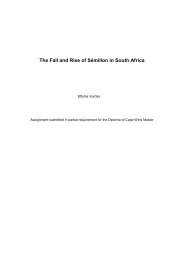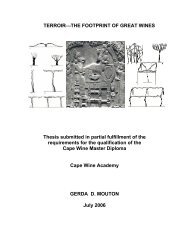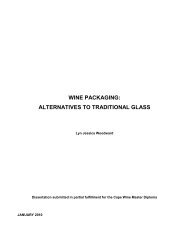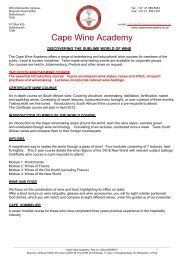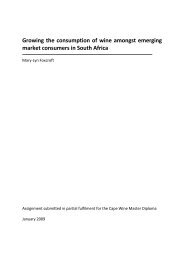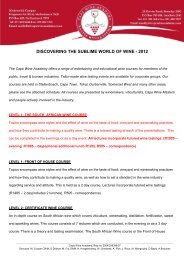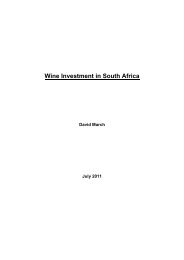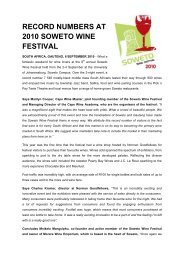micro-oxygenation in contemporary winemaking - Cape Wine ...
micro-oxygenation in contemporary winemaking - Cape Wine ...
micro-oxygenation in contemporary winemaking - Cape Wine ...
You also want an ePaper? Increase the reach of your titles
YUMPU automatically turns print PDFs into web optimized ePapers that Google loves.
Micro-<strong>oxygenation</strong> <strong>in</strong> Contemporary W<strong>in</strong>emak<strong>in</strong>g6.1.3 Categories of Phenolic Compounds <strong>in</strong> W<strong>in</strong>eA basic classification of the important phenolic compounds <strong>in</strong> w<strong>in</strong>e is shown <strong>in</strong> Figure 6.There are two ma<strong>in</strong> groups of phenolic compounds:1. Non-flavonoid phenols; and2. Flavonoid phenols.Figure 6: Categorisation of W<strong>in</strong>e Phenolic CompoundsDrawn from: (Heim et al., 2002; Roussow and Marais, 2004; Parker et al., 2007)The total concentration and phenolic composition of different types of w<strong>in</strong>es are shown <strong>in</strong>Table 10.Table 10: Concentration and Composition of Phenolic Compounds <strong>in</strong> W<strong>in</strong>eType of W<strong>in</strong>eTotal Phenolics(Gallic acid equivalents)PhenolicCompositionRed 1000-2000 mg/l Mostly flavonoidsWhite 100-400 mg/l Mostly non-flavonoidsRosé 400-800 mg/l 40-60% flavonoidsSource: (Margalit, 2004)36



